Mechanical Design Office
LCFI
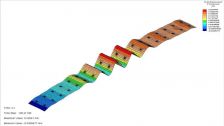
LCFI (Linear Collider Flavour Identification) collaboration consists of 5 British academic institutions (Oxford, RAL, Bristol, Liverpool, and Glasgow). The collaboration is pursuing an ambitious research and development programme to develop a pixel-based detector for heavy flavour identification at the international Linear Collider. We have been been working on FEA & CFD simulations of all the mechanical support concepts developed, global design of the detector support system and cooling etc; we have also carried out tests on prototype models in collaboration with RAL.
Mucool
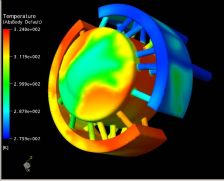
MUCOOL experiment is to test the feasibility of ionization cooling for an intense ionizing beam passing through a LH2 energy absorber. This facility was constructed in Fermi lab in US. In this project, we have worked on the CFD simulations, that allow us to address the LH2 force flow design and to understand the interdependence between the LH2 flow characteristics.
CLOVER MOUNT
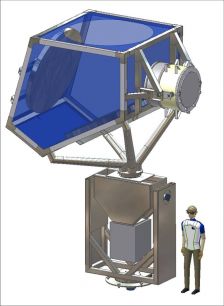
Clover is a UK-led project to detect the imprint of inflationary gravity waves on the polarisation of the Cosmic Microwave Background. We have designed and constructed mount and the optical assembly.
The 3 axis mount can slew at up to 12 degrees per second has a pointing accuracy of 10 arc seconds and zero backlash.
C-BASS
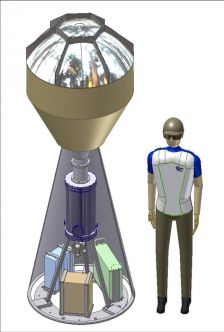
C-BASS is a new project to image the whole sky at a wavelength of six centimetres, measuring both the brightness and the polarization of the sky. We have designed and built a package of cryostat, secondary reflector and supports that can be mounted on two existing 6 m radio telescopes, one in California and one in South Africa.
As the workshop could not make a mirror of the required size it was fabricated in segments - a technique that can be scaled up to very large mirrors at this wavelength.
Streak Snake Camera
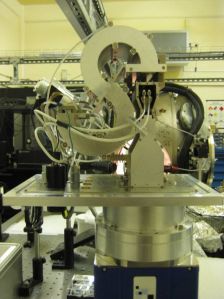
The Streak Camera is an instrument for measuring the variation in a pulse of light’s intensity with time, providing the ability to measure the pulse duration of ultrafast laser system. This system is completely designed and built by our group.
The photocathode element inside the streak tube converts light intensity into an electron current density through the photoelectric effect. The streak tube then converts the electron signal into an image of light intensity vs time that is captured by a CCD (charge-coupled devices) camera attached at the end of streak tube.
GUBBINS
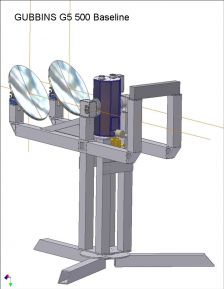
GUBBINS is a novel heterodyne interferometer currently under construction in Oxford that will both measure the spectrum of Sunyaev-Zel'dovich effect in the brightest galaxy clusters and provide a test-bed for future developments from our new-technology program. The project was fully designed and manufactured in the mechanical group and the use of a modular Newport motors and controllers makes a control system very easy to develop.
SLHC

The Design Office is involved in the design of a local support structure called stave which aims to achieve fast, robust, and parallelized production, and to facilitate test and repair of silicon detector modules before final assembly on to the barrels.
Our current involvement in this project are mainly the following areas:
MICE

MICE is a international collaboration project to build a section of Muon Cooling channel and demonstrate ionisation cooling. The experiment is being installed at the Rutherford Appleton Laboratory. We are involved in the design and engineering of major components in this experiment such as the Absorber Focus coil module, the ultra thin window, the particle detector supports, beam diffusing mechanism and the engineering integration of the cooling channel etc.


